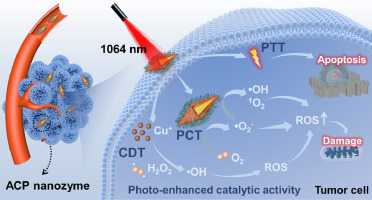


Nanophototherapy Plasmonic offers targeted cancer therapy
[La Réunion, France, 17/09/2024] – The field of cancer therapy is witnessing a groundbreaking advancement with the emergence of Nanophototherapy Plasmonic, a state-of-the-art technology that promises to transform cancer treatment with enhanced precision, reduced side effects, and superior patient outcomes. This innovation is powered by the synergy of nanotechnology and phototherapy, offering a beacon of hope for patients worldwide.
Nanophototherapy plasmonic is an innovative, non-invasive cancer treatment that employs nanoparticles to target cancer cells selectively. This technology uses the principles of nanotechnology, where metallic nanoparticles are engineered to absorb light energy and convert it into heat, selectively destroying cancer cells while sparing healthy tissue. The term “plasmonic” refers to the nanoparticles’ ability to harness light energy through localized surface plasmon resonance (LSPR), a phenomenon that significantly enhances the efficiency of light-based therapies.
This advanced therapy combines two cutting-edge fields:
The therapy process involves several steps:
Nanophototherapy plasmonic offers numerous benefits over traditional cancer treatments, including:
Recent studies have shown promising results in preclinical and early clinical trials. Researchers are exploring the potential of nanophototherapy plasmonic in treating a variety of cancers, including skin, breast, prostate, and brain cancers. For example, gold nanoparticles functionalized with antibodies specific to breast cancer cells have demonstrated significant success in selectively destroying cancer cells when exposed to NIR light.
Moreover, advancements in nanoparticle design are pushing the boundaries of this technology. Scientists are working on multifunctional nanoparticles that not only deliver therapeutic heat but also carry imaging agents, enabling real-time monitoring of treatment progress through techniques such as magnetic resonance imaging (MRI) and computed tomography (CT) scans.
While nanophototherapy plasmonic represents a monumental leap forward in cancer treatment, some challenges remain. These include:
Despite these challenges, the future of nanophototherapy plasmonic is bright. Researchers are optimistic about its potential to complement and even replace some existing cancer treatments, particularly for patients who cannot tolerate aggressive therapies.
Nanophototherapy plasmonic signifies a new era in cancer treatment, combining the precision of nanotechnology with the therapeutic power of light. Its targeted approach offers hope for more effective cancer therapy with fewer side effects, ultimately improving patients’ quality of life.
The ongoing research and development in this field are rapidly moving towards translating this technology from the laboratory to clinical practice. Leading healthcare institutions and biotech companies are investing heavily in this innovative therapy, recognizing its potential to revolutionize cancer care.
[Torskal Nanoscience] is at the forefront of research and innovation in nanotechnology and cancer treatment. With a dedicated team of scientists and healthcare professionals, we are committed to developing cutting-edge therapies like nanophototherapy plasmonic to combat cancer and improve patient outcomes. Our mission is to harness the power of nanotechnology to create safer, more effective treatments that pave the way for a future where cancer is no longer a life-threatening condition.
Nanophototherapy plasmonic represents a significant stride in the battle against cancer. As research progresses, this revolutionary therapy has the potential to become a mainstream cancer treatment option, offering patients a less invasive, more targeted alternative to conventional therapies. With continued investment in research and clinical trials, nanophototherapy plasmonic may soon transform the landscape of cancer care, offering new hope to patients around the world.
